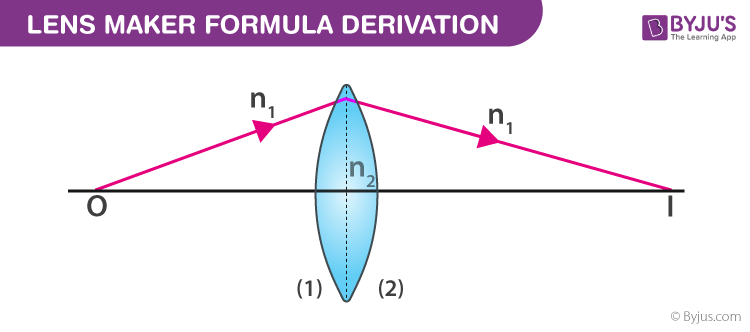Casual Derive The Lens Maker Formula For A Double Convex Lens

1 f where u is the distance of the object from the lens.
Derive the lens maker formula for a double convex lens. This is done to make ray optics calculations simpler but the first step would be to identify what constitutes thin and thick lenses. The two formulas given above are together referred to as the thin lens formula. Lens manufacturers use the lens makers formula to manufacture lenses of the desired focal length.
Let F be the principle focus and f be the focal length. I Aperture of lens should be small ii Lenses should be thin iiiObject should be point sized and placed on principal axis. Using the formula for refraction at a single spherical surface we can say that for the first surface for the second surface now adding equation 1 and 2 when u and v f.
Here µ is refractive index of lens material to the medium outside. Write the basic assumptions used in the derivation of lens makers formula and hence derive this expression. The lens has a focal length of 152 cm.
Frac1v-frac1ufrac1f Lens Formula Derivation. The following assumptions are taken for the derivation of lens maker formula. Show the part of this ray after reflection in each case.
A thin convex lens of focal length 10 cm and a thin concave lens of focal length 262 cm are in contact. Basic assumptions in derivation of Lens-makers formula. Let us consider the thin lens shown in the image above with 2 refracting surfaces having the radii of curvatures R1 and R2 respectively.
The lens makers equation is another formula used for lenses that. Though we derived it for a real image formed by a convex lens the formula is valid for both convex as well as concave lenses and for both real and virtual images. The two foci F and F of a double convex or concave lens are equidistant from the optical centre.








